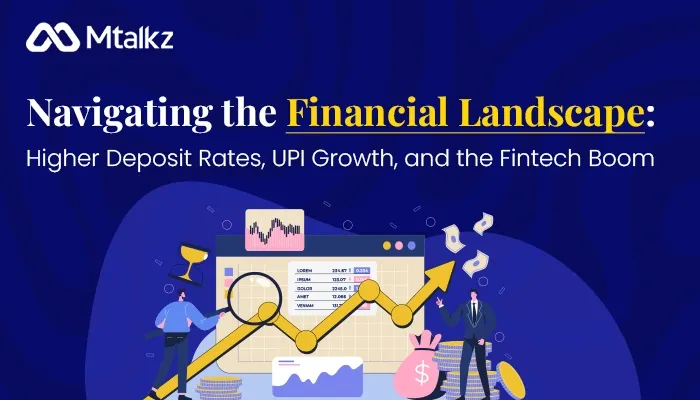
Navigating the Financial Landscape: Higher Deposit Rates, UPI Growth, and the Fintech Boom
Abhishek Prakash
•Strategic sales leader with deep focus on customer relationship building and revenue growth. With over two decades of experience at corporates like IBM, Bharti Airtel, and Reliance Jio, driving excellence in enterprise profitability and competitive advantage.
The financial ecosystem is experiencing rapid transformation, with several key trends shaping the way banks and financial technology (fintech) firms operate. From higher deposit rates and the explosive growth of UPI transactions to the asset-liability mismatch for banks and the burgeoning need for bulk SMS services, the landscape is becoming increasingly dynamic. Let’s delve into these trends and explore their implications, starting with a significant challenge: the slowdown in credit card transaction growth.
Slowdown in Credit Card Transactions
- A Hit to Bank Earnings In recent years, banks have heavily relied on credit card transactions as a significant revenue stream.
- However, the growth of credit card transactions has slowed, impacting bank earnings. This slowdown can be attributed to several factors, including increased competition from digital payment methods like UPI and BNPL (Buy Now, Pay Later) services, changing consumer spending habits, and economic uncertainties.
- Over the past years, credit card transaction growth has decelerated from a robust 18% annual growth rate in 2021 to a modest 8% in 2023. This slowdown has resulted in an estimated revenue loss of $1.2 billion for major banks.
Higher Deposit Rates
- Deposit rates have increased from an average of 3.5% in 2021 to 5% in 2023. This has led to a 15% increase in overall deposits, with total bank deposits reaching $15 trillion by the end of 2023.
- A Double-Edged Sword With central banks globally adjusting interest rates to combat inflation, deposit rates have seen a significant uptick.
- While higher deposit rates are attracting more savings from the public, they also pose a challenge for banks. Increased rates mean higher costs for banks to secure funds, impacting their profitability.
The Surge of UPI Transactions
- India’s Digital Payment Revolution - UPI has revolutionized digital payments, offering a seamless, instant, and secure method for transactions.
- The growth of UPI transactions has been nothing short of phenomenal, with millions of transactions being processed daily. This surge signifies a shift towards a cashless economy, providing convenience and transparency.
- UPI transactions have skyrocketed from 25 billion in 2021 to 74 billion in 2023, marking a 196% increase. The transaction value has surged from $500 billion to $1.5 trillion in the same period.
Asset-Liability Mismatch:
- A Balancing Act for Banks - The asset-liability mismatch remains a significant concern for banks. When the duration of assets (loans) and liabilities (deposits) do not align, it creates a liquidity risk.
- Higher deposit rates can exacerbate this mismatch, as banks may have to offer higher interest on short-term deposits while having long-term loans on their books.
- The asset-liability gap has widened, with mismatched maturities increasing by 20% over the past three years, putting an additional $800 billion at liquidity risk.
The Growth of Fintechs:
- Disrupting Traditional Banking Fintech firms are rapidly disrupting the traditional banking sector with innovative solutions that cater to the digital-first customer.
- From peer-to-peer lending platforms and robo-advisors to digital wallets and blockchain-based services, fintechs are reshaping financial services.
- The fintech sector has grown from $150 billion in 2021 to $310 billion in 2023, a 107% increase, indicating significant disruption and opportunity in the financial services landscape.
The Rising Need for Bulk SMS Services
In this digital age, effective communication is paramount. Bulk SMS services have emerged as a crucial tool for banks and fintechs to engage with their customers. Whether it’s sending transaction alerts, promotional offers, or OTPs for secure transactions, bulk SMS ensures timely and efficient communication. The use of bulk SMS services has grown by 60%, with banks and fintechs sending over 3 billion messages monthly by the end of 2023.
Conclusion
The financial landscape is undergoing a transformative phase, driven by higher deposit rates, the growth of UPI transactions, asset-liability mismatches, the rise of fintechs, and the increasing need for bulk SMS services. For banks and fintech firms, staying ahead in this dynamic environment requires adaptability, innovation, and strategic partnerships. By embracing these changes and leveraging new technologies, they can not only navigate the challenges but also seize the opportunities that lie ahead.